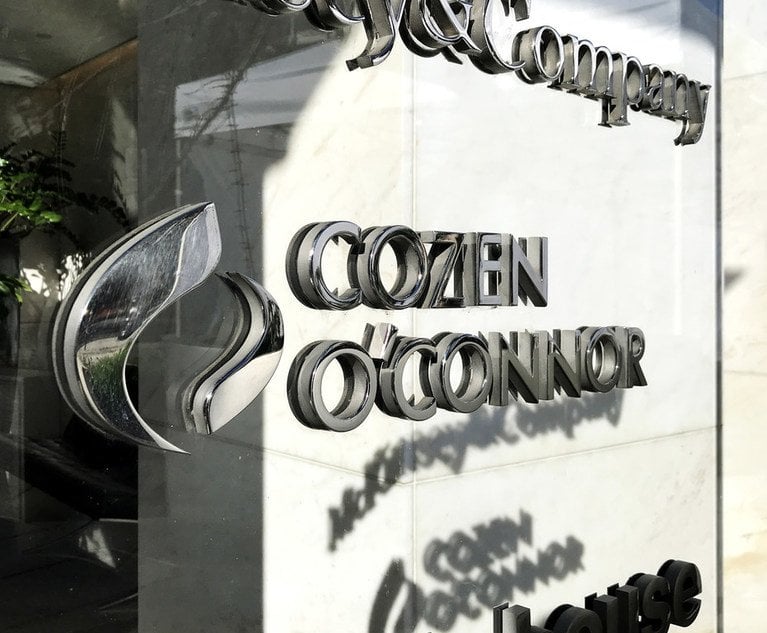 Ben Rubinowitz and Evan Torgan
Ben Rubinowitz and Evan Torgan Expert Cross-Examination: Creating Maximum Mileage From an Expert's Mistakes
"Effectively cross-examining an expert witness requires more than just identifying errors," write Ben B. Rubinowitz and Evan Torgan.
August 20, 2024 at 12:00 PM
8 minute read
Cross-examining an expert witness presents one of the most significant challenges an attorney faces at trial. Experts often come to court with years of specialized experience and substantial time in the courtroom—sometimes even more than the examining attorney. Despite this, the attorney usually invests significantly more time scrutinizing the case than the expert does. This thorough preparation provides the attorney with a crucial advantage: the ability to identify and exploit flaws in the expert's analysis or report. When leveraged effectively, even minor mistakes can become powerful tools to undermine the expert's credibility and reveal shortcomings in the expert's diligence and thoroughness in rendering an opinion.
Consider the following scenario: A train collides with a car at a grade crossing. The car's driver, diverted from a major highway due to an accident, finds herself on an unfamiliar, dark road. She stops near the railroad tracks and only realizes her position once the crossbuck arm descends onto her car. As a train approaches, the engineer, familiar with his route, spots a reflection at the crossing from about 1200 feet away. Though he suspects it might be a car, he does not immediately apply the brakes. The driver exits her vehicle, touches the crossbuck arm, re-enters her car, and attempts to pull forward. The car and train collide, resulting in the driver's death, the death of five train passengers, and injuries to numerous others. During the trial, the plaintiffs argue that the train engineer was negligent for failing to slow down, while the defense blames the driver's lack of caution.
NOT FOR REPRINT
© 2025 ALM Global, LLC, All Rights Reserved. Request academic re-use from www.copyright.com. All other uses, submit a request to [email protected]. For more information visit Asset & Logo Licensing.
You Might Like
View All
Communications With Non-Retained Experts May Be Subject to Disclosure
8 minute read
NY Appeals Court Grants J&J's Subpoena for Talc Expert as 'Clearly Relevant'
6 minute read
Defense Counsel Can't Use Unrelated Lawsuit to Impeach Expert Witness Testimony, Judge Rules

What You Need to Know About New York Commercial Division Rule 13(c)
6 minute readLaw Firms Mentioned
Trending Stories
- 1Carol-Lisa Phillips to Rise to Broward Chief Judge as Jack Tuter Weighs Next Move
- 2Data Breaches in UK Legal Sector Surge, According to ICO Data
- 3Georgia Law Schools Seeing 24% More Applicants This Year
- 4After Shutting USAID, Trump Eyes Department of Education, CFPB
- 5‘Keep Men Out’: Female Swimmers Sue Ivy Leagues Over Lia Thomas’ Sweep
Who Got The Work
J. Brugh Lower of Gibbons has entered an appearance for industrial equipment supplier Devco Corporation in a pending trademark infringement lawsuit. The suit, accusing the defendant of selling knock-off Graco products, was filed Dec. 18 in New Jersey District Court by Rivkin Radler on behalf of Graco Inc. and Graco Minnesota. The case, assigned to U.S. District Judge Zahid N. Quraishi, is 3:24-cv-11294, Graco Inc. et al v. Devco Corporation.
Who Got The Work
Rebecca Maller-Stein and Kent A. Yalowitz of Arnold & Porter Kaye Scholer have entered their appearances for Hanaco Venture Capital and its executives, Lior Prosor and David Frankel, in a pending securities lawsuit. The action, filed on Dec. 24 in New York Southern District Court by Zell, Aron & Co. on behalf of Goldeneye Advisors, accuses the defendants of negligently and fraudulently managing the plaintiff's $1 million investment. The case, assigned to U.S. District Judge Vernon S. Broderick, is 1:24-cv-09918, Goldeneye Advisors, LLC v. Hanaco Venture Capital, Ltd. et al.
Who Got The Work
Attorneys from A&O Shearman has stepped in as defense counsel for Toronto-Dominion Bank and other defendants in a pending securities class action. The suit, filed Dec. 11 in New York Southern District Court by Bleichmar Fonti & Auld, accuses the defendants of concealing the bank's 'pervasive' deficiencies in regards to its compliance with the Bank Secrecy Act and the quality of its anti-money laundering controls. The case, assigned to U.S. District Judge Arun Subramanian, is 1:24-cv-09445, Gonzalez v. The Toronto-Dominion Bank et al.
Who Got The Work
Crown Castle International, a Pennsylvania company providing shared communications infrastructure, has turned to Luke D. Wolf of Gordon Rees Scully Mansukhani to fend off a pending breach-of-contract lawsuit. The court action, filed Nov. 25 in Michigan Eastern District Court by Hooper Hathaway PC on behalf of The Town Residences LLC, accuses Crown Castle of failing to transfer approximately $30,000 in utility payments from T-Mobile in breach of a roof-top lease and assignment agreement. The case, assigned to U.S. District Judge Susan K. Declercq, is 2:24-cv-13131, The Town Residences LLC v. T-Mobile US, Inc. et al.
Who Got The Work
Wilfred P. Coronato and Daniel M. Schwartz of McCarter & English have stepped in as defense counsel to Electrolux Home Products Inc. in a pending product liability lawsuit. The court action, filed Nov. 26 in New York Eastern District Court by Poulos Lopiccolo PC and Nagel Rice LLP on behalf of David Stern, alleges that the defendant's refrigerators’ drawers and shelving repeatedly break and fall apart within months after purchase. The case, assigned to U.S. District Judge Joan M. Azrack, is 2:24-cv-08204, Stern v. Electrolux Home Products, Inc.
Featured Firms
Law Offices of Gary Martin Hays & Associates, P.C.
(470) 294-1674
Law Offices of Mark E. Salomone
(857) 444-6468
Smith & Hassler
(713) 739-1250






